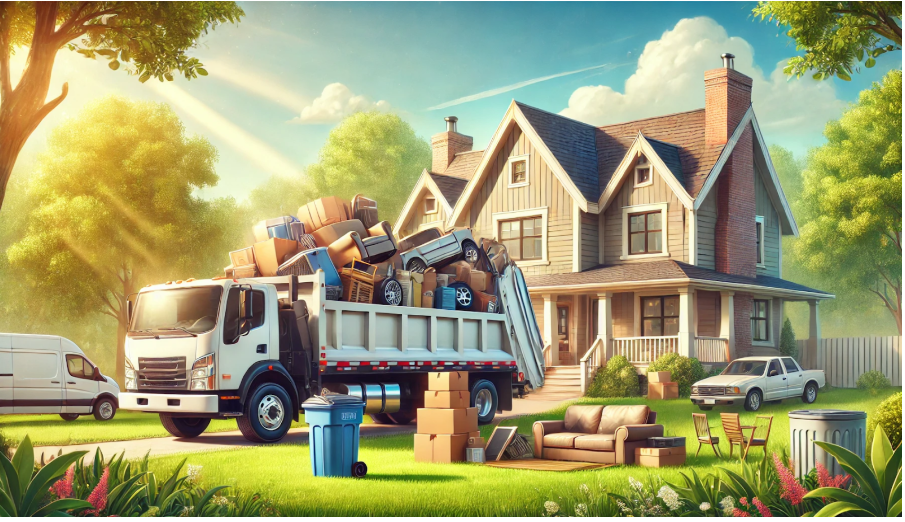
The Ultimate Guide to Household Junk Disposal: How to Declutter Responsibly
We all know how easy it is for
household junk to pile up. From old furniture and
broken electronics to clothes we never wear anymore, clutter can quickly take over your home. But getting rid of household junk doesn’t have to be a daunting task. In this guide, we’ll walk you through the most effective ways to dispose of household junk, helping you clear your space responsibly and sustainably.
Why Proper Household Junk Disposal Matters
1. Reduces Stress and Clutter
Studies show that a clutter-free environment can improve your mental well-being and increase productivity. By regularly getting rid of junk, you can create a more relaxing and functional space.
2. Protects the Environment
Improper disposal of household waste, especially electronics and hazardous materials, can harm the environment. Recycling and responsible disposal can significantly reduce your environmental footprint.
3. Complies with Local Regulations
Many cities have strict rules about what can and cannot be thrown away with regular trash. Understanding these regulations can help you avoid fines and ensure you’re disposing of items responsibly.
Step-by-Step Guide to Efficient Household Junk Disposal
Step 1: Take Inventory of Your Junk
Before you start throwing things away, it’s essential to understand what you’re dealing with.
- Walk through your home: Identify areas with the most clutter, such as basements, garages, and closets.
- Categorize items: Separate your junk into categories like recyclables, donations, hazardous waste, and regular trash.
- Create a list: This helps you keep track of what needs to be disposed of and where it can go.
Step 2: Sort and Separate Junk
Breaking down your junk into categories makes disposal easier and more efficient.
| Category | Examples |
|---|---|
| Recyclable | Cardboard, paper, plastics |
| Reusable/Donations | Furniture, clothing, toys |
| Hazardous Waste | Paint, batteries, electronics |
| Trash | Broken items, non-recyclable waste |
Step 3: Donate Usable Items
Before you toss things into the trash, consider if they can still be used. Donation centers, shelters, and charities often accept gently used items like furniture, clothing, and toys.
- Where to donate:
- Goodwill
- Salvation Army
- Local shelters and non-profits
- Benefits of donating: Not only are you reducing waste, but you’re also helping those in need.
Step 4: Recycle Whenever Possible
Recycling reduces the amount of waste that ends up in landfills. Here’s how to recycle common household items:
- Paper and Cardboard: These are usually accepted by curbside recycling programs.
- Glass and Plastics: Clean and sort by type before recycling.
- Electronics: Many electronics stores have recycling programs for old devices.
- Metals: Scrap metal can often be recycled at local facilities.
Step 5: Dispose of Hazardous Waste Properly
Certain items cannot be thrown in with regular trash due to their potential environmental impact.
- Examples of hazardous waste:
- Paints and solvents
- Batteries
- Light bulbs (CFLs)
- Household cleaners and chemicals
- How to dispose of hazardous waste: Contact your local waste management facility for drop-off days or special disposal services.
Professional Household Junk Disposal Services vs. DIY
| Criteria | DIY Disposal | Professional Service |
|---|---|---|
| Cost | Lower upfront costs | Higher, but includes labor |
| Time Commitment | High, especially for large items | Quick and hassle-free |
| Effort | Requires heavy lifting | Handled by professionals |
| Environmental Impact | May miss recycling opportunities | Prioritizes eco-friendly disposal |
When to Consider Hiring Professionals
- Large Cleanouts: If you’re moving or renovating, a professional service can handle large volumes quickly.
- Heavy Items: For bulky items like old appliances and furniture.
- Hazardous Waste: Professionals know how to handle and dispose of hazardous materials safely.
Tips for Responsible Household Junk Disposal
- Adopt the One-In, One-Out Rule
- For every new item you bring into your home, get rid of one old item to prevent clutter from building up.
- Schedule Regular Cleanouts
- Set aside a weekend every few months for decluttering. This helps prevent junk from accumulating.
- Sell or Repurpose Items
- If an item is still in good condition, consider selling it online on platforms like Craigslist or Facebook Marketplace.
- Get creative and repurpose items instead of tossing them. For instance, turn old jars into storage containers.
- Use Eco-Friendly Disposal Services
- Partner with junk removal companies that focus on recycling and donating items.
- Some companies offer zero-waste solutions, ensuring that as little as possible ends up in landfills.
FAQs on Household Junk Disposal
Q1: Can I throw old electronics in the trash?
No, electronics contain harmful chemicals that can leak into the soil and water supply. Always recycle e-waste through certified programs.
Q2: What should I do with old paint?
Most cities have designated drop-off sites for hazardous waste, including paint. Check your local waste management website for details.
Q3: How do I get rid of large furniture?
You can donate it if it’s in good condition, or hire a professional junk removal service to haul it away.
Q4: Are junk removal services expensive?
The cost varies depending on the volume of junk and location but generally ranges from $100 to $600 per truckload.
